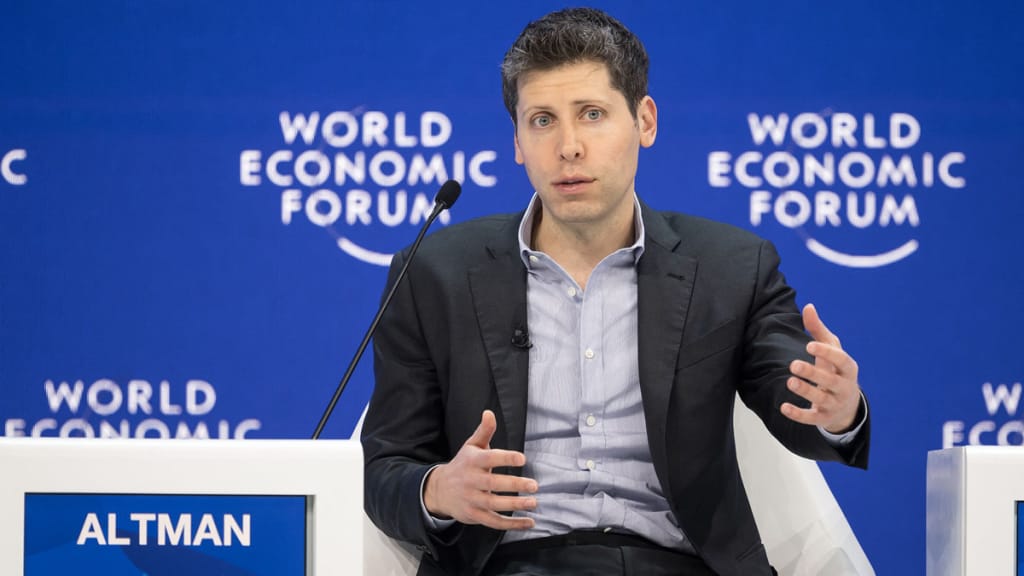
Artificial intelligence is energy-hungry, and as corporations compete to make it bigger, better, and more complicated, its energy demand will grow even more. This creates a difficult challenge for a business that markets itself as a great tool for saving the planet: a massive carbon footprint. However, according to Sam Altman, the head of ChatGPT inventor OpenAI, there is a simple answer to this perplexing problem: nuclear fusion. Altman has invested hundreds of millions of dollars in fusion. In recent interviews, he has stated that futuristic technology, long regarded as the holy grail of renewable energy, may someday deliver the massive quantities of power required by next-generation AI.
“We need fusion, alongside scaling up other renewable energy sources”
“There’s no way to get there without a breakthrough, we need fusion,” alongside scaling up other renewable energy sources, Altman said in a January interview. Then in March, when podcaster and computer scientist Lex Fridman asked how to solve AI’s “energy puzzle,” Altman again pointed to fusion. Nuclear fusion — the process that powers the sun and other stars — is likely still decades away from being mastered and commercialized on Earth. For some experts, Altman’s emphasis on a future energy breakthrough is illustrative of a wider failure of the AI industry to answer the question of how they are going to satiate AI’s soaring energy needs in the near term.
It chimes with a general tendency toward “wishful thinking” when it comes to climate action, said Alex de Vries, a data scientist and researcher at Vrije Universiteit Amsterdam. “It would be a lot more sensible to focus on what we have at the moment, and what we can do at the moment, rather than hoping for something that might happen,” he told CNN.
The challenge is to find enough renewable energy to meet AI’s growing demands shortly without resorting to planet-warming fossil fuels
A spokeswoman for OpenAI did not reply to specific queries posed by CNN, instead cited to Altman’s remarks in January and Fridman’s podcast. The appeal of nuclear fusion to the AI sector is obvious. Fusion is the process of smashing two or more atoms together to form a denser one, which releases a large amount of energy. It does not emit carbon dioxide into the atmosphere and leaves no trace of long-lived nuclear waste, providing a tantalizing image of a clean, safe, and abundant energy source. However, “recreating the conditions in the centre of the sun on Earth is a huge challenge” and the technology is unlikely to be available until the latter part of the century, said Aneeqa Khan, a research fellow in nuclear fusion at the University of Manchester in the UK.
“Fusion is already too late to deal with the climate crisis,” Khan told CNN, adding, “In the short term we need to use existing low-carbon technologies such as fission and renewables.” Today, nuclear energy is generated primarily through fission. The challenge is to find enough renewable energy to meet AI’s growing demands shortly without resorting to planet-warming fossil fuels. It’s a particularly difficult task as the global rush to electrify everything from cars to heating systems raises demand for clean energy. According to a new International Energy Agency report, electricity usage from data centres, cryptocurrency, and artificial intelligence might triple in the next two years. According to the IEA, the sector accounted for approximately 2% of world electricity demand in 2022. The estimate predicted that demand for AI will expand exponentially, at least tenfold, between 2023 and 2026.
AI takes significant computer power to “train” models
In addition to the energy necessary to manufacture chips and other hardware, AI takes significant computer power to “train” models — feeding them massive datasets — and then to utilize that training to respond to a user inquiry. As technology advances, corporations hurry to incorporate it into apps and internet searches, increasing computing power requirements. According to de Vries, an internet search employing AI could consume at least ten times more energy than a regular search. The dynamic is one of “bigger is better when it comes to AI,” according to de Vries, which drives corporations toward massive, energy-intensive models. “That is the main issue with AI because bigger is better is simply inherently incompatible with sustainability,” he added.
The problem is especially serious in the United States, where energy demand is rising for the first time in 15 years, according to Michael Khoo, climate disinformation program director at Friends of the Earth and co-author of a report on AI and climate. “We, as a country, are running out of energy,” he told CNN. A boom in data centres is contributing to increased demand. According to Boston Consulting Group research, data centre electricity consumption is anticipated to triple by 2030, enough to power almost 40 million US households. “We’re going to have to make hard decisions” about who receives the energy, whether it’s thousands of households or a data centre that powers next-generation AI, Khoo said. “It can’t simply be the richest people who get the energy first,” he added.